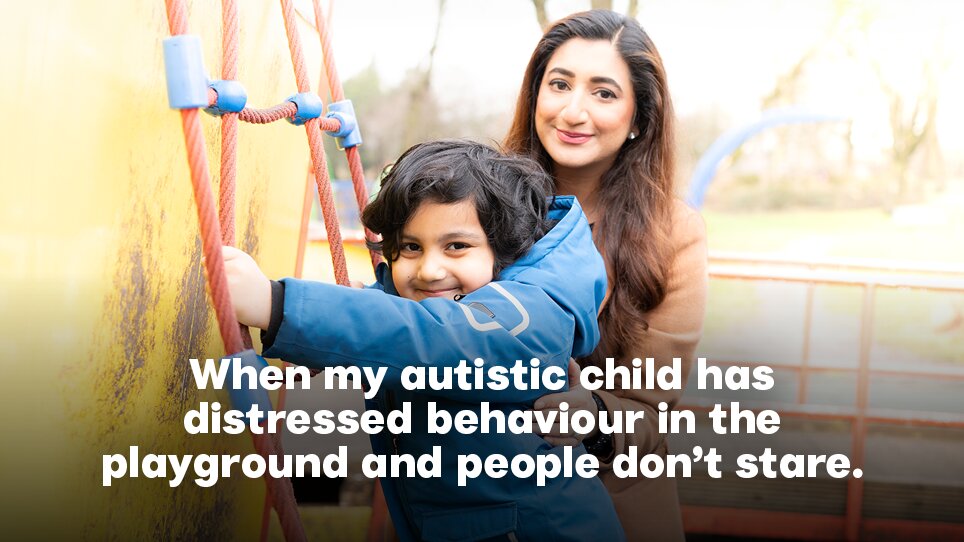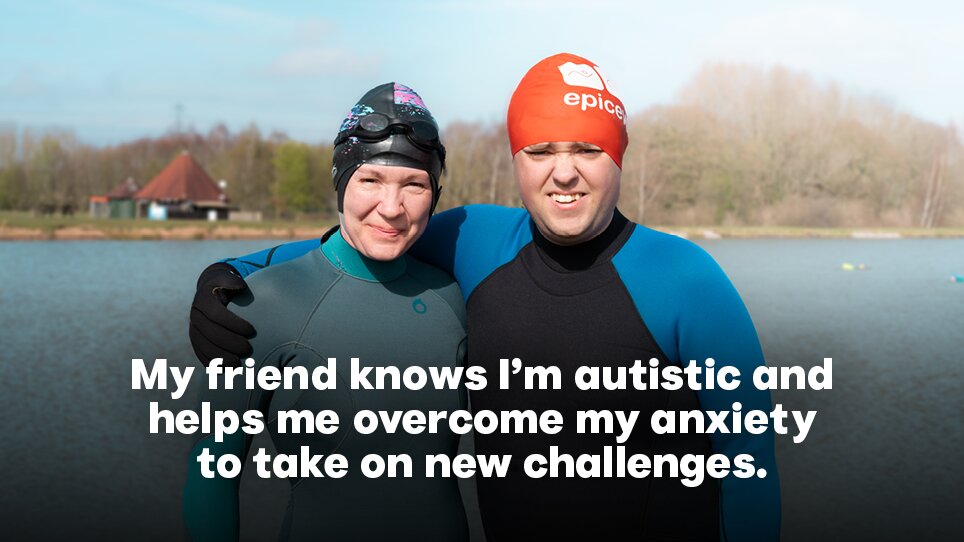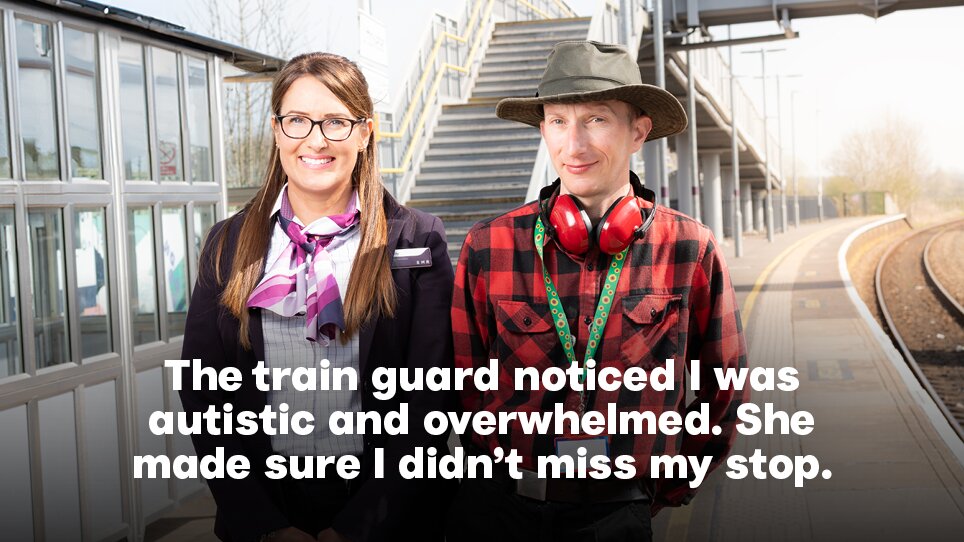It's How You Show Up
Our surveys show there is a significant gap in understanding of autism and the ways in which people can support autistic people and their families at work, at school and in public places.
Showing up for autistic people can be easier than you might think. We have launched a public awareness campaign to educate people on simple changes they can make.
Visit our pledge wall to see how others are showing up for autistic people and add your pledge
Showing up can look like taking little steps to understand someone’s experience of the world. Allowing time for them to process or space for them to regulate. Shifting your expectations and making it clear that, that’s OK. Advocating for autistic colleagues in the workplace and the world. There are so many simple, everyday ways you can make a huge difference while helping to build a kinder, more supportive world for everyone.
Real life examples of how to show up
Kiran and Ibraheem
Kiran’s son, Ibraheem, sometimes experiences distressed behaviour in the playground or at the supermarket due to overwhelm or too much sensory input. Kiran is always so grateful to those members of the public or staff who ask if they can help or give them the space and time they need for Ibraheem to recover.

"People not judging and being kind makes all the difference."
Mathew and Lottie
Mathew has sometimes been prevented from doing new things because of a lack of confidence. Lottie, a friend from work, has helped him to take on a triathlon by training with him every week at their local open water swimming venue. They've also climbed Snowdon, Scafell Pike and Ben Nevis together.

"Lottie has helped me to rebuild my social confidence that I lost during the pandemic and has inspired me to take on more adventures in the future."
Nick and Becky at EMR
Nick was supported by East Midlands Railway guard, Becky, on a recent train journey. Becky noticed Nick was overwhelmed and checked to see if he was ok and made sure he didn't miss his stop.

"Becky was so kind and really made me feel less anxious."
George and Paula
George works as an IT service desk engineer at a financial services company. His employer provides reasonable adjustments such as having 1-2-1 meetings with his mentor Paula and providing a structured list of tasks each day. This helps George manage his anxiety and prioritise his work.

“I’m grateful to my employer for giving me reasonable adjustments so I can do my job well.”
Many workplace reasonable adjustments are easy to make and often cheap or free. Learn more in our Employment advice hub.
Edward and Mrs H
Edward goes to mainstream school, which he sometimes finds overwhelming. To help him and other autistic students, the headteacher introduced training for staff on how to support them. She also adapted the school to provide more break-out areas and sensory rooms.

“When Mrs H sat under the table with me, it made my mind reach a calm stage and she made me feel safe.”
Sriman and Ranga
Sriman and his mum Ranga go to their local temple and then their favourite vegetarian restaurant once a month. The restaurant manager turns down the lights and music because Sriman finds them very overwhelming. This helps him to stay calm and focus on enjoying his food.

“When someone makes changes like these, it makes you feel so comfortable, and you want to go back again.”
Georgina and the public
Georgina often flaps her hands to help her stay calm or when she is extremely happy. This is a form of ‘stimming’, which many autistic people do. Unfortunately, people can often stare or make unkind comments when they see autistic people stimming. Georgina has a good way of dealing with this. She often asks people to flap along with her because she wants them to share the joy.

“It is a great icebreaker and often leads to a conversation around autism.”
Porcha and Eddie
Porcha and Eddie met at school and have become best friends. They love music and making each other laugh. They are both autistic, but that doesn't mean they are the same. Their friendship is strong because they understand and support each other's individual needs.

"We are such good friends we can read each other's minds now! We will stay in touch after we have left school because our friendship is so important to us. "
